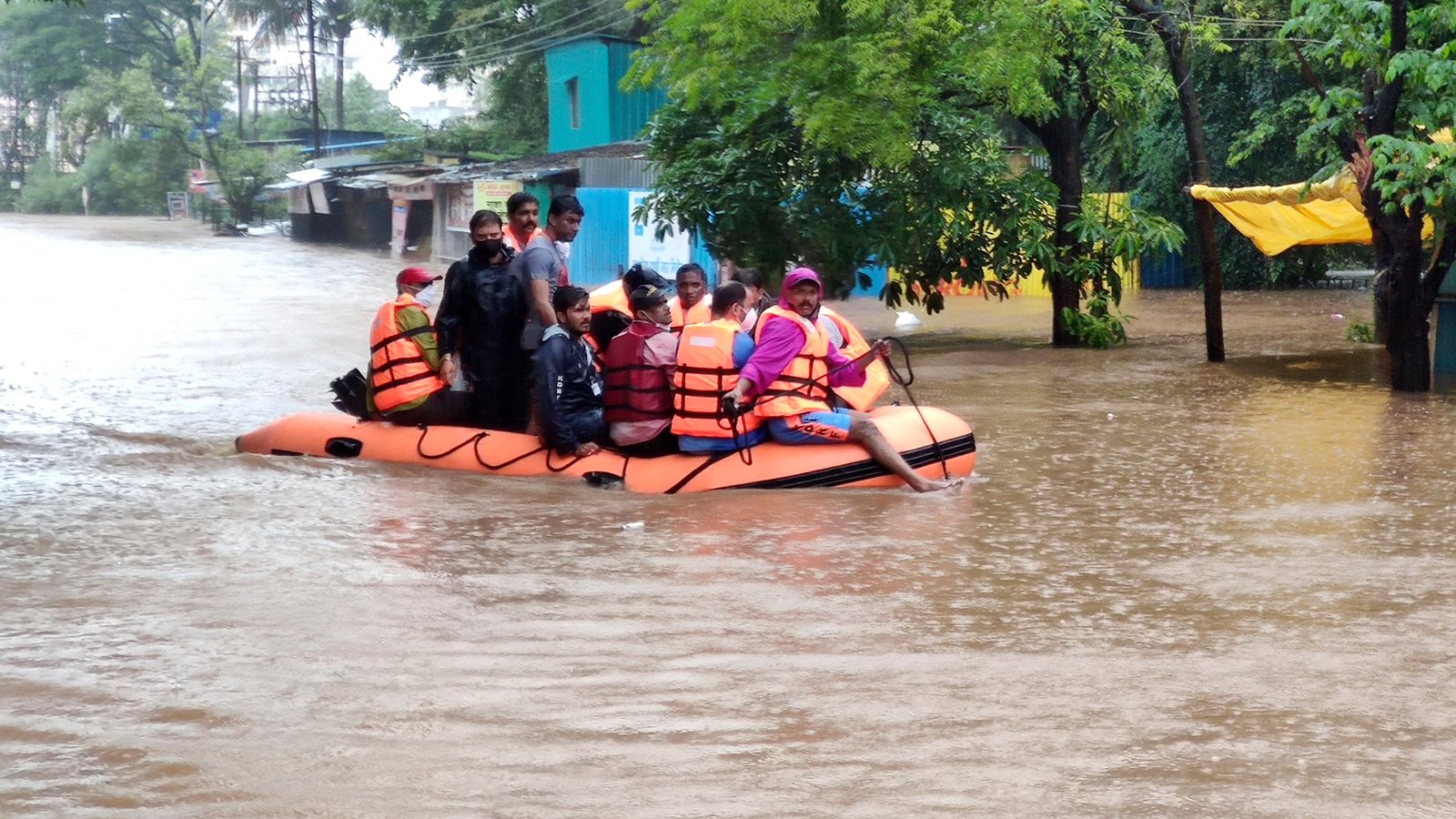At least 125 people have died in India after torrential downpours caused severe floods and landslides – burying homes and submerging streets.
The state of Maharashtra has been hit by its heaviest July rainfall in 40 years, with unrelenting deluges lasting for days.
Four landslides in the Raigad and Ratnagiri region claimed 54 lives, with up to 1,000 more people becoming trapped on top of buildings and vehicles by the flood waters.
In Taliye, just over 100 miles southeast of the financial capital Mumbai, 42 people have died after landslides flattened the village, with dozens more missing.
Some 27 people were killed in the Satara district after houses were swept away, local media said, while 20 others lost their lives in the eastern districts of Gondia and Chandrapur.
Parts of the west coast of India have had up to 594mm (23 inches) of rain, with officials evacuating vulnerable areas so water can be released from dams before they overflow, while at the hill station of Mahabaleshwar, the area has recorded its highest ever daily rainfall of 60cm across 24 hours.
According to the local government, around 90,000 people have so far been rescued from the areas hit by the torrential downpours.
Elsewhere, the main highway linking Mumbai and Bengaluru has been partially submerged, meaning thousands of trucks have been stranded for more than a day.
Among those helping with the rescue operation are the army, navy, coastguard and the National Disaster Response Force, the defence ministry said, with helicopters part of the deployments.
Prime Minister Narendra Modi tweeted his response to the situation, writing: “The situation in Maharashtra due to heavy rains is being closely monitored and assistance is being provided to the affected.”
On Friday, authorities sounded an alert in the southern state of Telangana after more heavy rain triggered flooding in the state capital of Hyderabad.
Some 12 inches of rain has fallen in the city so far this month, which experts say is the area’s heaviest July rainfall in a decade.
Please use Chrome browser for a more accessible video player
It means that the state’s reservoir at Osman Sagar has had its floodgates opened for the first time in 10 years in an effort to discharge the excess waters.
Flooding in India is common during the summer monsoon season, with heavy rain weakening the structures of often poorly constructed buildings.
The devastation in India comes after heavy rain across China and western Europe, as well as heatwaves across the US and searing heat in the UK, raising fresh fears about the impact of climate change.






















